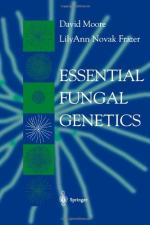|
This section contains 761 words (approx. 3 pages at 300 words per page) |

|
Fungi possess strikingly different morphologies. They include large, fleshy, and often colorful mushrooms or toadstools, filamentous organisms only just visible to the naked eye, and single celled organisms such as yeast's. Moulds are important agents of decay. They also produce a large number of industrially important compounds like antibiotics (penicillin, griseofulvin, etc), organic acids (citric acid, gluconic acid, etc.), enzymes (alpha-amylases, lipase, etc.), traditional foods (softening and flavoring of cheese, shoyu soy sauce, etc.) and a number of other miscellaneous products (gibberellins, ergot alkaloids, steroid bioconversions). As late as 1974, the only widely applicable techniques for strain improvement were mutation, screening, and selection. This has proved dramatically successful in improving penicillin production. However, this deflected attempts to employ a more sophisticated approach to genetic manipulation. The study of fungal genetics has recently changed beyond all recognition.
The natural genetic variation present in fungal species has been characterized...
|
This section contains 761 words (approx. 3 pages at 300 words per page) |

|


